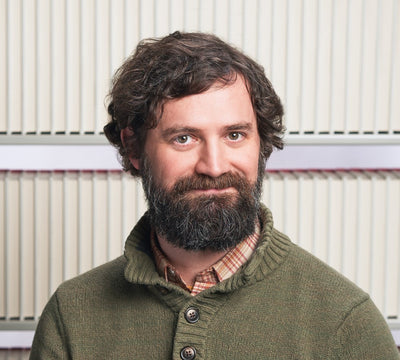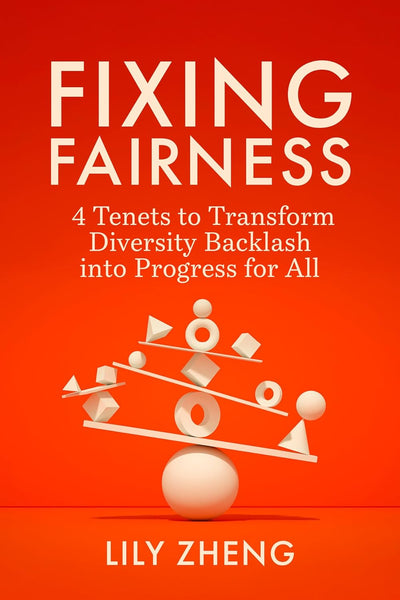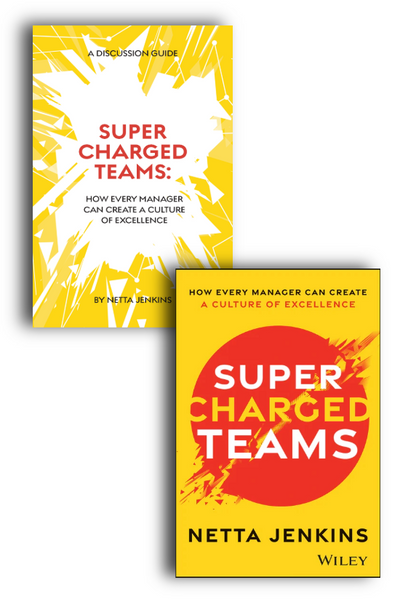A Global Call for Justice, the Corporate Response, and the Current Challenge
Diversity, equity, and inclusion efforts are currently under attack. DK Bartley explores the recent history of events, the idea, and the industry, and explains why "the most successful companies aren’t retreating from DEI, they’re evolving their approach."
The first call came minutes after George Floyd was pronounced dead. I let it go to voicemail, hoping to take a moment to process what I’d just witnessed on my screen. Then another call came. And another. The sound pierced through the quiet of my kitchen, where I sat with my takeout growing cold. The shrill beeping shook me out of my numbness.
I knew what these calls meant. As a DEI expert practitioner, I’d received similar calls before. Every time we received a tragic reminder of America’s unresolved racial trauma my phone would ring. But something felt different this time. The calls weren’t just from my usual network of DEI colleagues. They came from CEOs, board members, and HR directors I hadn’t heard from in years.
One company offered me a million-dollar base salary (plus very competitive long-term incentives) on the spot to become their Chief Diversity Officer. I turned it down. It was obvious they didn’t want real change; they wanted a poster child, someone they could point to and say, “look, we’re doing something. See? We hired a top expert. We care!” But as my phone continued to light up with calls from corporate leaders across the country, I realized we were witnessing something unprecedented.
The response began locally. On May 26, hundreds gathered in Minneapolis at the site of Floyd’s death. By May 27, protesters took to the city streets in growing numbers. Within a week, demonstrations had spread to almost every major US city, and most minor ones too, marking one of the largest protest movements in American history.1
The unprecedented scale of documentation made this movement different from any before. Live streams of more than 400 protests were viewed over 1.4 billion times, creating what analysts called a “perfect storm” of visibility: there was simply no way to look away or deny what was happening.2
As people across the country protested police violence, law enforcement officers often responded, ironically, with escalating force. Medical experts documented the devastating impact of the “less lethal” weapons used to break up crowds during these rallies. Rubber bullets penetrated skin, broke bones, ruptured eyeballs, and even caused traumatic brain injuries. Despite manufacturer guidelines specifying that these weapons should only be aimed at the lower body, videos showed officers frequently targeting protesters’ heads and upper bodies.3 These efforts only spurred the protesters on, as citizens grew more justified in their anger. The very tactics meant to silence the demonstrations instead amplified them, broadcasting police aggression to millions of viewers worldwide.
Those still sheltering in place took to the internet to express their outrage and support. According to Pew Research Center, the phrase “Black Lives Matter” appeared on Twitter an average of 2 million times a day in the weeks following Floyd’s death, with the hashtag being used nearly 47.8 million times between May 26 and June 7, 2020, marking the highest volume of daily tweets using the hashtag since the platform began tracking it.4
On June 2, 28 million Instagram users participated in Black Out Tuesday, a movement that originated within the music industry but quickly spread across social media platforms. Major music labels including Atlantic Records, Capitol Music Group, Warner Records, and Sony Music joined the protest by pausing all business operations for the day.5 Instead of posting traditional content, millions of users uploaded simple black squares to their Instagram feeds. Though well-intentioned, Black Out Tuesday revealed the complexity of digital activism—many critics pointed out that the black squares were drowning out information and resources being shared by organizers on the ground.
Within weeks, the calls for justice had crossed oceans. More than 70 countries held solidarity protests and demonstrations.6 In London, thousands of protesters flooded Trafalgar Square, kneeling in solidarity for a minute’s silence before chanting “no justice, no peace.” Signs bearing Floyd’s last words, “I can’t breathe,” were raised alongside the names of Black Britons who had died in police custody. The demonstrations spread across the UK, with protests erupting in Manchester, Cardiff, Leicester, and Sheffield.7
In Paris, a crowd of 20,000 people gathered outside their US Embassy, defying a police ban on large gatherings during the COVID-19 pandemic. The protests quickly evolved to encompass France’s own struggles with police violence, with demonstrators carrying signs that read “Justice for Adama” alongside “Justice for Floyd.”8
In Sydney, Australia, tens of thousands marched through the heart of the city after winning a last-minute court appeal to authorize the demonstration. What began as a protest against American police brutality transformed into a powerful statement about Indigenous deaths in Australian police custody.9
These weren’t just expressions of solidarity with American protesters—people in other countries saw their own struggles reflected in Floyd’s death. In France, demonstrators drew explicit parallels to the killing of Adama Traoré, a young Black man who died in French police custody in 2016 after telling officers, “I can’t breathe.” Traoré’s sister, Assa, became a leading voice in the French protests, telling crowds, “What’s happening in the United States is happening in France.”10
Australia’s Indigenous community, which has long faced systemic discrimination and police violence, found kinship with the Black Lives Matter movement. In the 12 days following Floyd’s death, more than 25,000 Australians donated over $1.5 million to Indigenous rights campaigns, marking an unprecedented surge in support for Aboriginal justice initiatives.11 From Brazil to South Korea, local activists connected Floyd’s murder to their own battles against state violence and systemic racism, transforming an American tragedy into a global rallying cry for justice.12
Artists around the world created powerful murals honoring Floyd’s memory, from the streets of São Paulo to the walls of Paris to public spaces in Lithuania. These weren’t just artistic expressions, they became powerful catalysts for change. Local artists transformed city walls into memorials that sparked conversations about justice and equality in their own communities.13
The corporate world, caught in this storm of global outrage, faced unprecedented pressure to respond. It wasn’t enough to issue vague statements about “standing against racism” or making nominal donations to civil rights organizations. Employees were demanding real action. Customers were scrutinizing company practices. Activists were calling out corporate hypocrisy. The very tools companies had used to build their brands— social media, corporate communications, carefully crafted public images—became channels for holding them accountable.
Consider what happened to CrossFit. When founder and CEO Greg Glassman responded to the protests with a flippant tweet comparing Floyd’s murder to the pandemic (“Floyd-19”), the response was swift and devastating. Within days, more than 1,000 affiliated gyms abandoned the CrossFit name, and major sponsor Reebok immediately announced they would end their partnership when their contract expired at the end of the year.14
This wasn’t just another news cycle that companies could wait out. The combination of undeniable evidence, a captive audience, and the amplifying power of social media had created something new: a moment of sustained moral clarity that demanded more than performative activism. Companies that had successfully avoided meaningful conversations about race for decades now faced a choice: transform or be transformed.
The initial corporate response revealed just how unprepared most companies were for this moment. For years, Black deaths at the hands of police had gone unremarked in corporate America. Now, companies that had previously remained silent found themselves scrambling to respond.15 Startups suddenly grappled with diversity strategies, while major corporations faced pressure from both employees and customers to take meaningful action.16
Universities and colleges across the nation were forced to confront their own institutional biases. Analysis of 356 statements issued by higher education institutions showed a dramatic shift in how they addressed racism, moving from “color-blind” messaging to explicitly acknowledging systemic racism.17
The financial response was unprecedented. Major banks, historically hesitant to wade into social issues, pledged billions toward racial equity initiatives. According to the Harvard Law School Forum on Corporate Governance, corporations announced more than $50 billion in commitments to racial justice causes.18 PepsiCo committed $400 million over five years specifically to increase Black representation in management and support Blackowned businesses.19
But the most significant changes weren’t just about money, they were about how companies fundamentally operated. PNC Bank, for example, developed an $88 billion community benefits plan focused on economic empowerment in low- and moderate-income areas and communities of color.20 Netflix went beyond statements about supporting Black lives; they moved $100 million of their cash holdings to Black-owned banks, fundamentally changing how they thought about even their routine business operations.21
Companies began sharing unprecedented levels of transparency about their workforce demographics. Google and Microsoft not only published detailed diversity reports but set specific, measurable goals for improvement.22
Banks began leveraging their multicultural employee networks in new ways. M&T Bank, for instance, established 100 new multicultural banking centers, staffed by bilingual employees, and designed specifically to serve diverse communities.23
Most significantly, companies began tying executive compensation to diversity goals. Starbucks announced that executive compensation would be directly linked to meeting diversity targets, aiming for 40 percent BIPOC representation in retail and manufacturing roles by 2025.24 DEI wasn’t a separate initiative anymore: it became a boardlevel priority, with executives being held personally accountable for progress.
The transformation that began in American boardrooms soon rippled across the globe. Companies began scaling up their DEI initiatives internationally, adapting their approaches to different cultural contexts while maintaining core commitments to equity and inclusion.25
Major global corporations began transforming their approach to diversity and inclusion. Sony Music Group made history by appointing Tiffany R. Warren as its first-ever Executive Vice President and Chief Diversity and Inclusion Officer. Warren, known for founding ADCOLOR, the premier organization celebrating diversity in creative industries, brought decades of experience in building inclusive corporate cultures. Her appointment signaled a fundamental shift in how Japanese corporations approached leadership and representation.26
The transformation manifested differently across cultures and industries, but the conversation reached the highest levels of global business leadership. At the World Economic Forum in Davos, diversity and inclusion became central themes in discussions about the future of work. Leaders examined how these issues intersected with technological change, economic recovery, and the growing skills gap in the global workforce. The Forum highlighted how companies that embraced diversity were better positioned to address future challenges, from climate change to digital transformation.27
Global shipping giant A.P. Møller-Maersk demonstrated how multinational corporations could implement practical changes. They conducted comprehensive leadership training programs that embedded diversity and inclusion principles for over 1,100 first-time leaders, creating a ripple effect throughout their global operations. This training went beyond traditional diversity workshops, focusing on practical skills for building and leading inclusive teams in a complex, multicultural environment.28
These changes weren’t just about doing the right thing; they reflected a growing understanding that diversity drives innovation and performance in an increasingly interconnected world. Companies began recognizing that their ability to compete and grow depended on building organizations that could harness diverse perspectives and serve diverse markets effectively.
THE CURRENT CHALLENGE
The story, however, gets more complicated. As the changes resulting from Floyd’s murder began to show results, they also sparked intense public debate. By 2024, the pushback had reached the highest levels of business and politics. Billionaire Elon Musk sparked controversy when he tweeted that “DEI is just another word for racism,” drawing immediate criticism from other business leaders. Mark Cuban publicly challenged Musk’s statement, arguing that business leaders should focus on finding the best talent regardless of background. Their exchange highlighted the growing divide in corporate America over DEI initiatives, with Cuban emphasizing that diverse hiring pools increase competition and raise standards.29
The political sphere amplified these tensions. Then-former President Trump intensified the rhetoric during a major policy speech, claiming that “Every institution in America is under attack from this Marxist concept of equity.” He called for the complete dismantling of equity initiatives in federal agencies, framing DEI programs as a direct threat to American meritocracy. His speech specifically targeted federal contractor requirements and diversity training programs, calling for their immediate elimination.30
The rhetoric quickly transformed into action. On his first day back in office, Trump issued a series of executive orders abolishing DEI positions across the federal government, placing hundreds of employees on immediate leave. Through the newly created Department of Government Efficiency, led by Elon Musk, the administration moved to slash what it claimed was over $120 billion in annual DEI spending. The White House also required tens of thousands of federal contractors to certify they did not operate any “unlawful forms of DEI,” while establishing a tip line for workers to report attempts to disguise such programs through “coded or imprecise language.”31
The impact of this backlash became increasingly visible in corporate America. Major companies began rolling back their DEI initiatives, with each announcement creating a domino effect across industries. Walmart’s retreat proved particularly significant given its position as America’s largest private employer. The retail giant’s carefully worded statement to Newsweek reflected the delicate balance companies tried to strike: “We’ve been on a journey and know we need to constantly evolve our approach.” This announcement followed similar moves by Toyota, which had begun reviewing all its DEI policies, and several major financial institutions that had previously been industry leaders in diversity initiatives.32
The retreat manifested in concrete ways across industries. Job postings with “DEI” in the title declined significantly, while companies that had previously trumpeted their diversity achievements began speaking about these efforts in more muted terms. Corporate diversity officers, once highly sought after, reported finding their roles and resources diminished. Some companies began rebranding their diversity initiatives under different names, while others quietly merged their DEI departments with general human resources functions.33
The pressure on companies to abandon their DEI commitments sometimes came from unexpected sources and could escalate rapidly. The case of Jack Daniel’s parent company, Brown-Forman, proved particularly illustrative. When faced with threats of an “anti-woke” boycott on social media, the spirits giant quickly announced plans to pull back on their DEI initiatives. The company’s rapid reversal came despite their previous commitments to diversifying their workforce and supplier base. This demonstrated how vulnerable these programs could be to coordinated pressure campaigns, even at well-established companies with long histories of community engagement.34
With the conservative, “anti-DEI” political force on the apparent ascendancy under President Trump’s second term, it may seem that, at least superficially, the dramatic changes that began five years ago in response to the murder of George Floyd are on their way out. However, in my experience working with organizations across sectors, I’ve observed that the most successful companies aren’t retreating from DEI, they’re evolving their approach. Rather than abandoning their commitments entirely, they’re finding ways to integrate DEI principles into their core business practices. They understand that this isn’t about politics or public relations. It’s about competing in a global economy where innovation and growth depend on our ability to identify, develop, and retain the best possible talent. It’s about building organizations that can spot opportunities others miss and solve problems others can’t crack.
Through decades of working with organizations worldwide, I’ve come to understand that excellence and inclusion strengthen each other. Whether companies call it DEI-AB (adding Accessibility and Belonging); Merit, Excellence, and Intelligence (MEI); or use another framework entirely, I’ve consistently seen that formalizing the way organizations bring different perspectives together tends to make them stronger and more innovative.
As someone who has dedicated their career to this work, I believe the key question facing organizations isn’t whether to embrace inclusive practices, but whether they’ll lead or follow in this transformation.
Excerpted with permission from the publisher, Wiley, from Boom to Backlash: George Floyd’s Legacy on DEI as a Business Imperative by DK Bartley. Copyright © 2025 by John Wiley & Sons, Inc. All rights reserved. This book is available wherever books and eBooks are sold.
About the Author
DK BARTLEY is a subject matter expert for DEI and talent acquisition. As an executive, public speaker, and influencer, Bartley inspires people and corporations around the world to expand and innovate their business practices. He is currently Chief Talent Officer for Diversity Talent International and former Chief DEI Officer for Moody’s Corporation.








